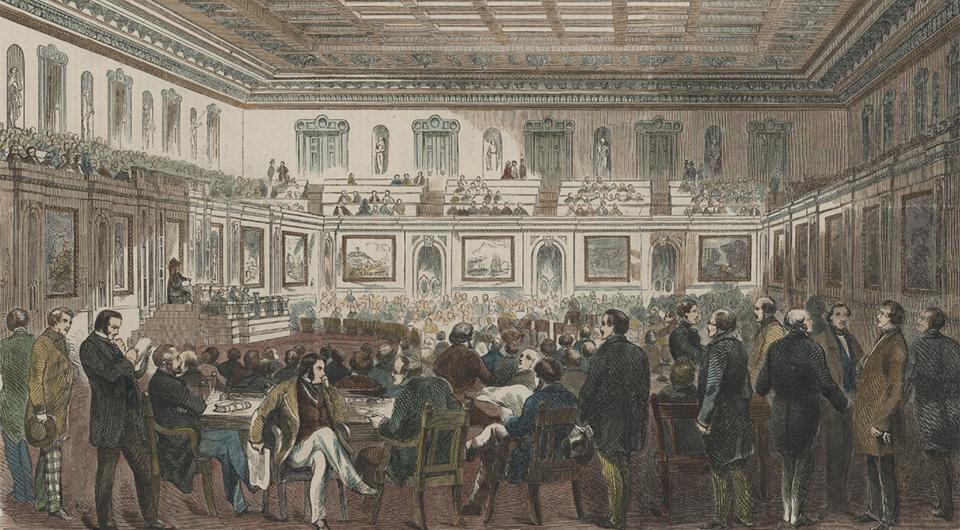
The Constitution grants the U.S. House of Representatives a unique set of powers in the federal government, embodying the framers’ intent to make it uniquely responsive to the will of the people. James Madison of Virginia, the father of the Constitution and the House’s most important statesman in the early Congresses, believed the House should have “an immediate dependence on, and intimate sympathy with, the people.”
The House is the only branch of government that has been directly elected by American voters since its formation in 1789. Unlike the Senate, the House is not a continuing body. Its Members must stand for election every two years, after which it convenes for a new session and essentially reconstitutes itself—electing a Speaker, swearing-in the Members-elect, and approving a slate of officers to administer the institution. Direct, biennial elections and the size of the membership (currently 435 voting Representatives) have made the House receptive to a continual influx of new ideas and priorities that contribute to its longstanding reputation as the “People’s House.”
Together, the House Office of the Historian and the Office of Art and Archives, under the Clerk of the House, serve as the House’s institutional memory. Their collaborative website, History, Art & Archives, provides resources for Members, staff, and the general public to explore more than 225 years of House history:
-
Learn about the origins and development of the House, from the framers’ vision for the newly created Congress to major developments in the institutional powers and duties of the House.
-
Discover what happened on a date in House history in a searchable calendar.
-
Search the biographies of the more than 11,000 people who have served in the House, as well as the many House Officers since 1789.
-
Explore lists of House leadership, including a historical list of Speakers of the House.
-
Find historical statistics on election results, House service and seniority, party divisions, session dates, and more.
-
Read a series of publications on women, African Americans, Hispanic Americans, and Asian and Pacific Islander Americans who have served in Congress and their role in the developing and changing institution.
-
Investigate the inner workings of Congress during some of the most influential periods in our country’s modern history through oral history.
-
Find out What’s in the Capitol and how the House’s historically significant spaces have evolved with Congress’ many changes.
-
Understand the history of the House through art and artifacts in the House Collection.
-
Search a selection of the records of the committees and House Officers to better understand how citizens interact with their government and the work of the House.
-
Discover ways to bring history to life in the classroom with featured materials, lesson plans, and resources which highlight the House’s people and customs.
-
Read the stories behind the legislation and procedure in Whereas: Stories from the People’s House.
-
Receive your daily dose of House history through Twitter @USHouseHistory.
IMAGE: The New Hall of Representatives, with the Members in Session, Collection of the U.S. House of Representatives.